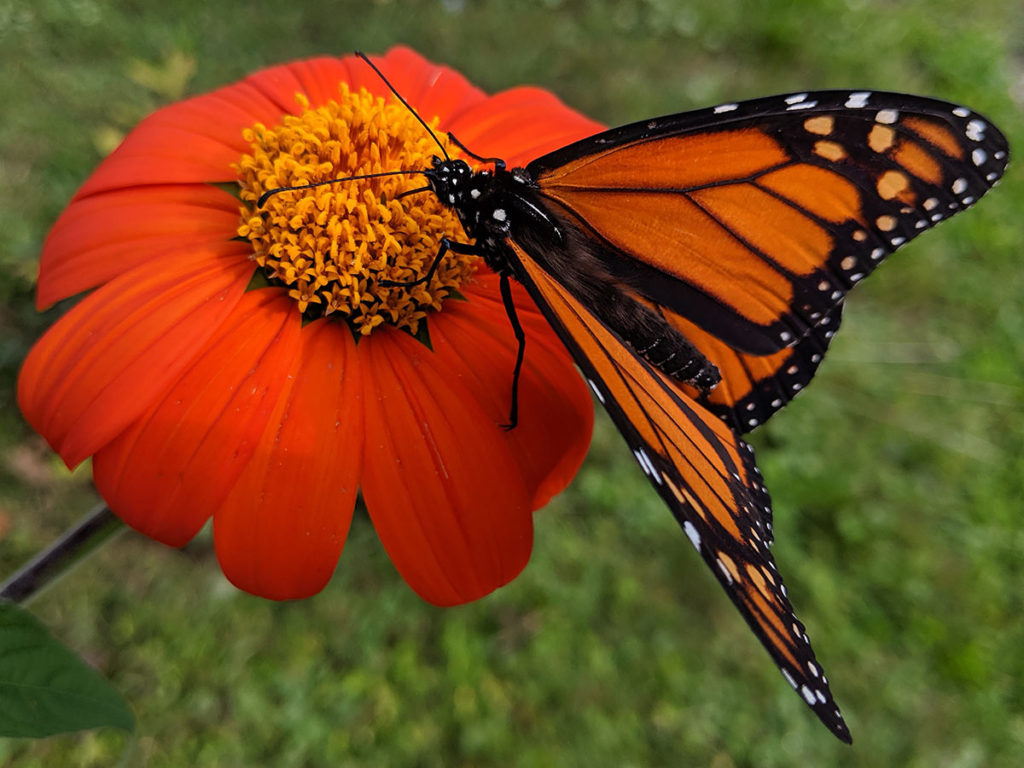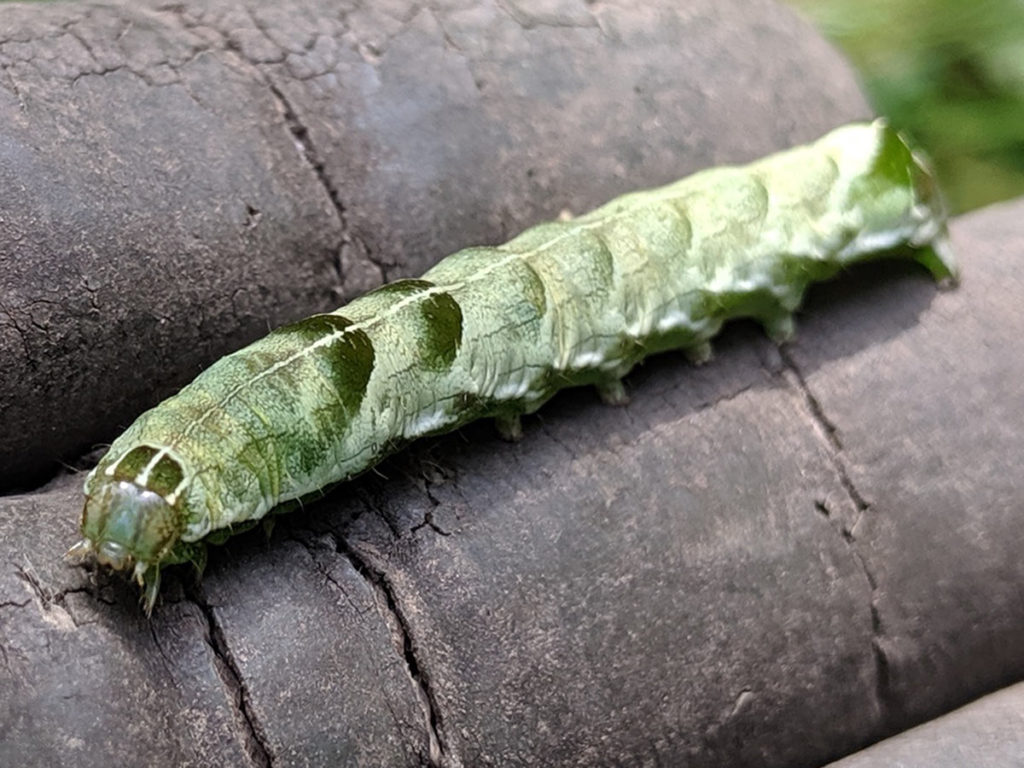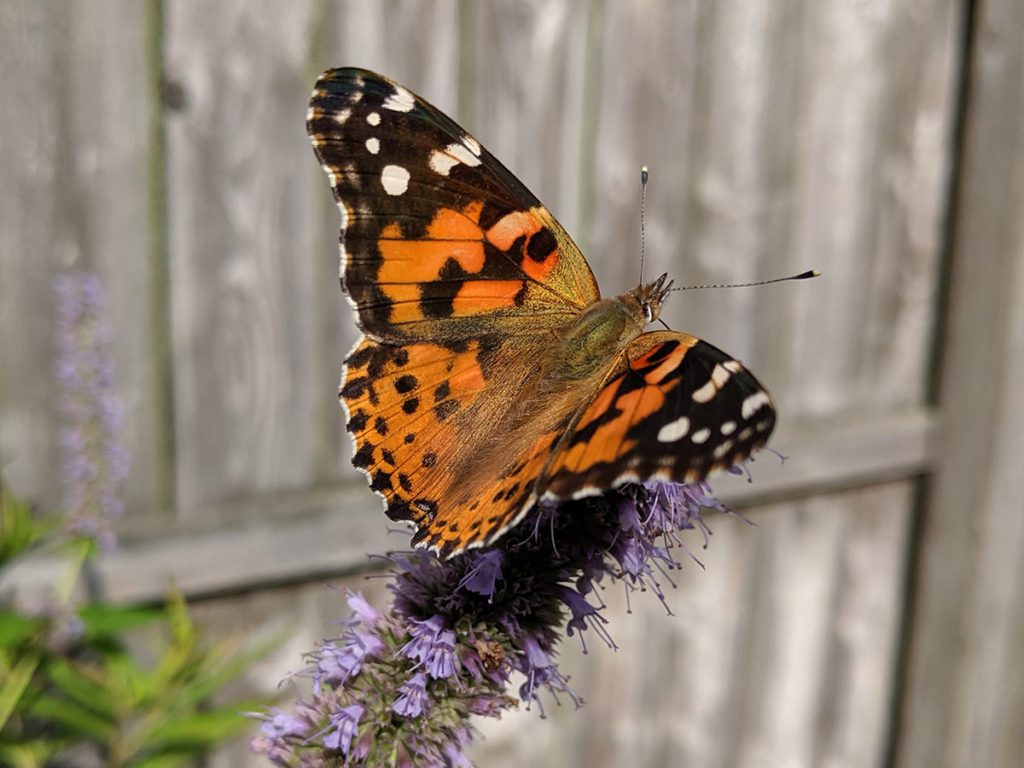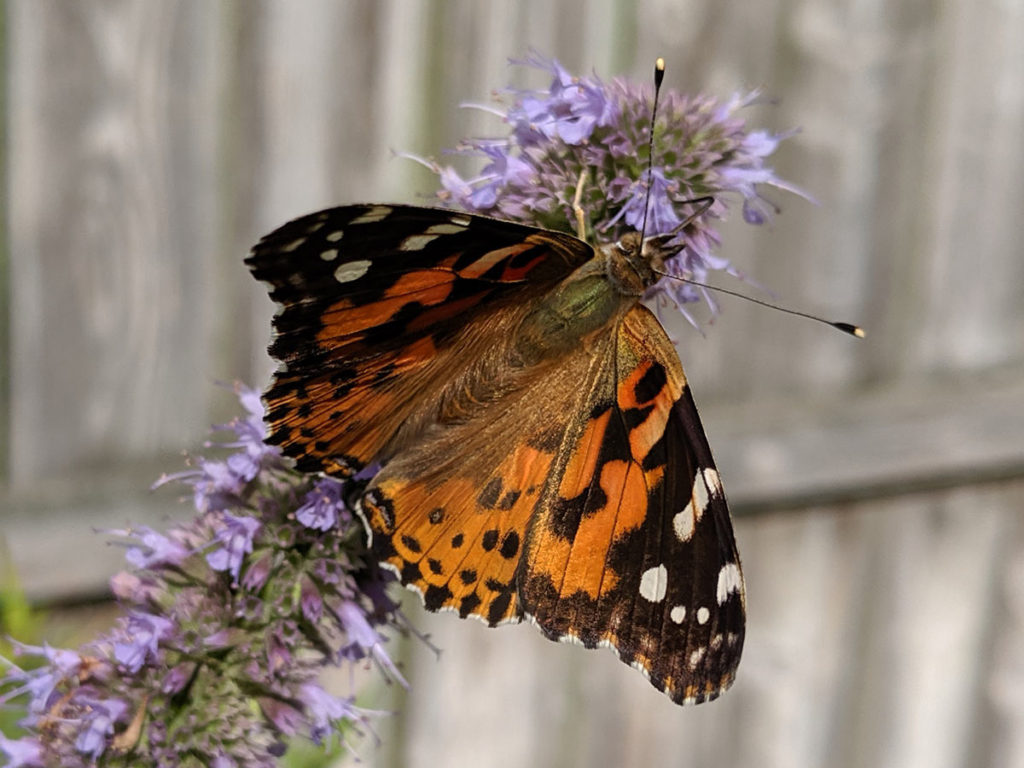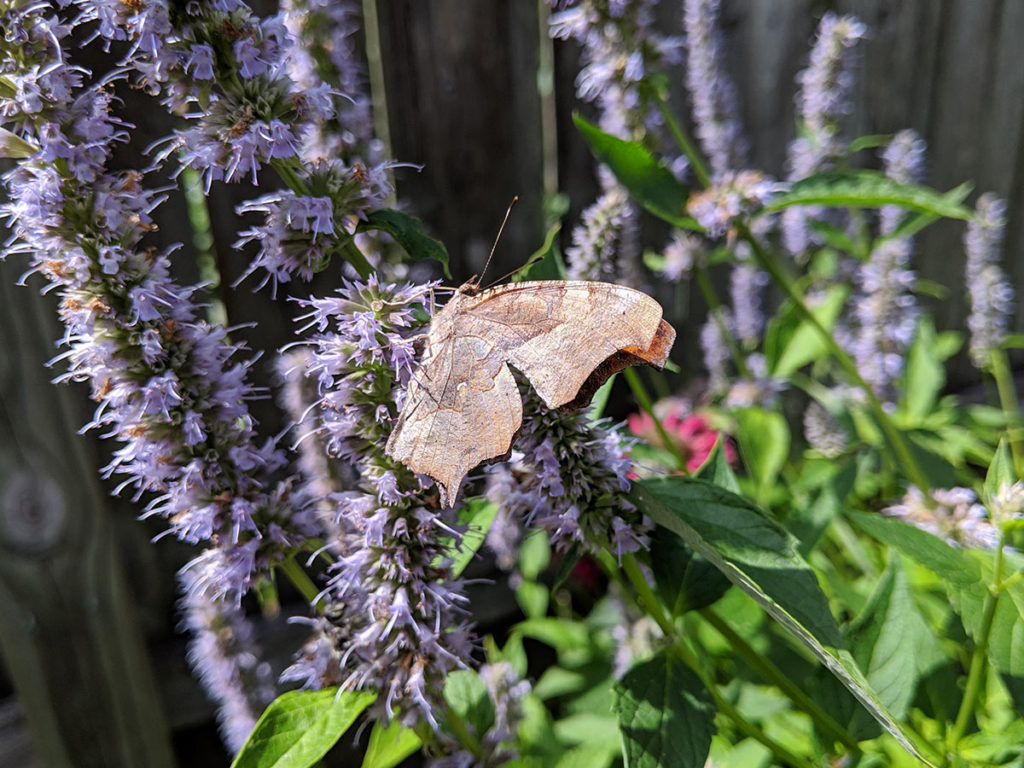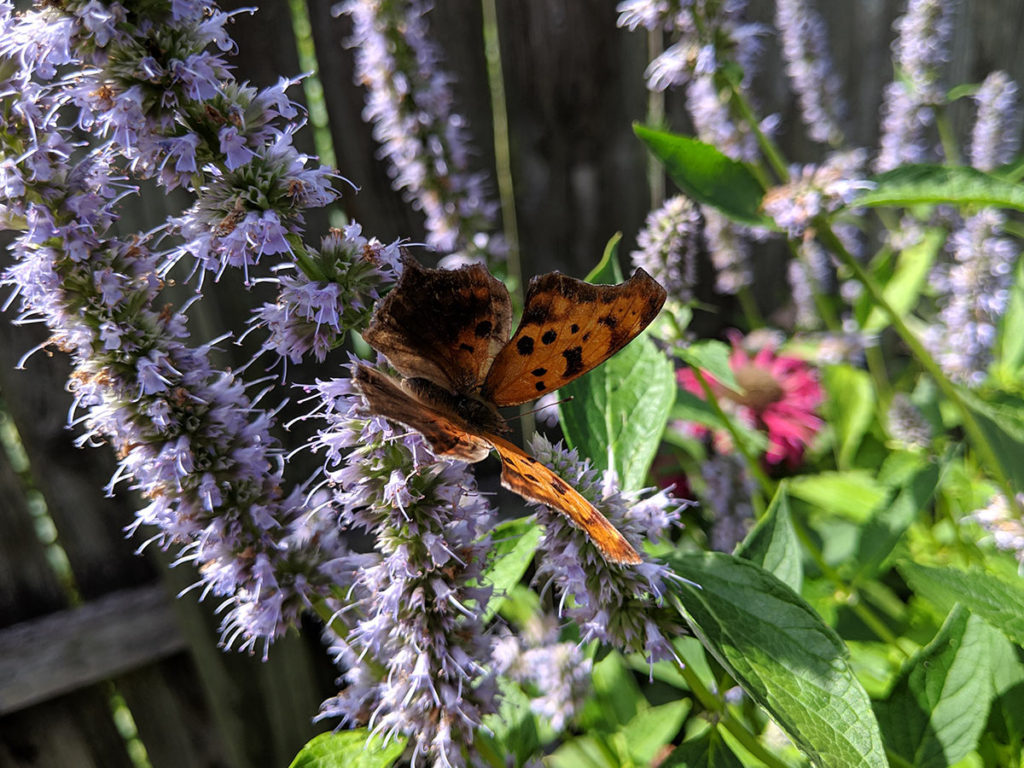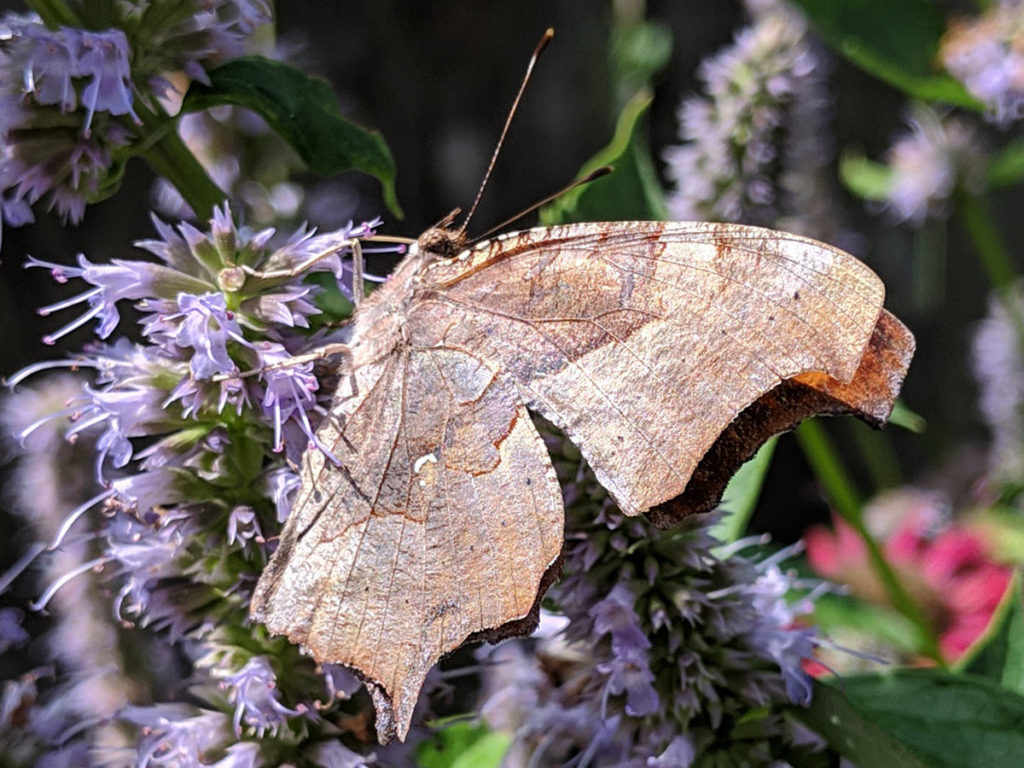On the 15th of each month, garden bloggers from around the world celebrate Bloom Day together. We photograph to share with everyone what’s in bloom in the garden. If you’d like to see even more blooms, head over to May Dreams Gardens. The following is what is in bloom on the Lot in USDA growing zone 6a.
Seasonal Signals
After gardening awhile, you begin to notice the changing of the seasons by the behavior of plants in your garden. On the Lot, summer is winding down when the asters and sedum begin to bud after a season of quiet foliage. The anemone push up thin stalks with marble-sized buds at the end of each. The amsonia’s green needle-like foliage begins its transition to a lovely gold. And then there are plants profusely blooming through the summer, and as the amount of daylight shortens they begin to slow down.
Late Summer / Early Autumn Blooms
This season brought yet another new bed to the Lot. We replaced the mess of soil and ground stump where the dying norway maple had been with some plants I’m hoping are tough in the sun yet salt tolerant. Of those plants, the blanket flower (Ghilardia ‘Arizona Sun’) and some yellow lilies are continuing to offer up their cheery, warm-hued blooms.
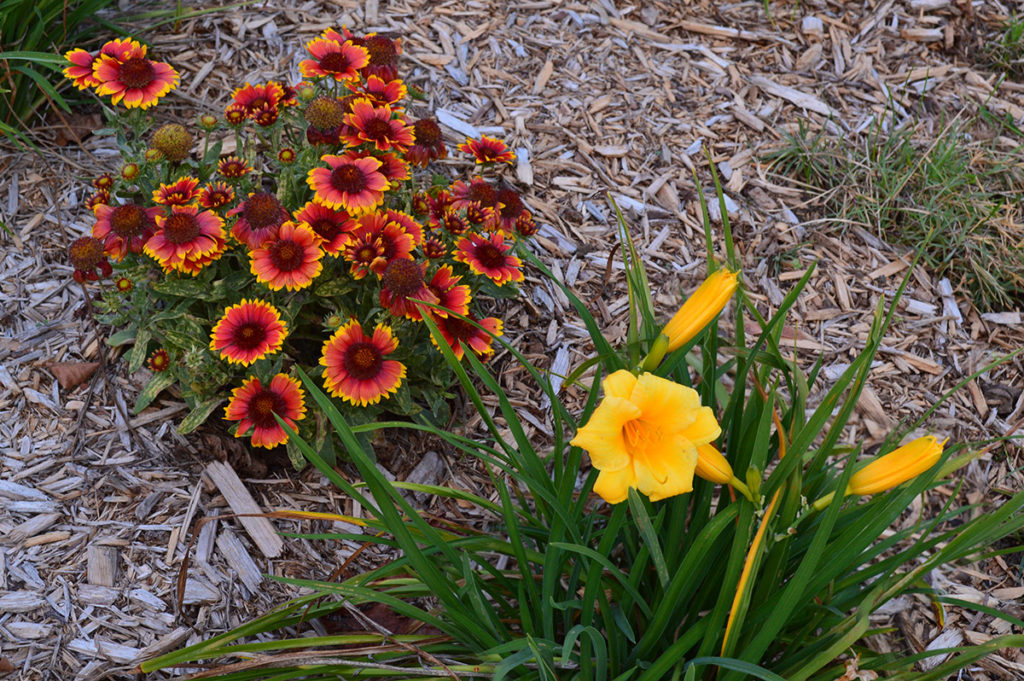
Across the sidewalk in the southeast bed, the jupiter’s beard (Centranthus ruber) is blooming. It usually blooms most of the summer, but a snaggle of rose canes had been shading it. The rose was pruned (later in the season that it should have been because this gardener needs staff!!!) and the jupiter’s beard is now adding a splash of pink to the bed.
Also, the autumn crocus (Culchicum) have emerged from the soil to brighten the bed. These always remind me of a dear friend who gifted them to me. These blooms are the special type of lavender/violet that really glow at dusk or on overcast days.
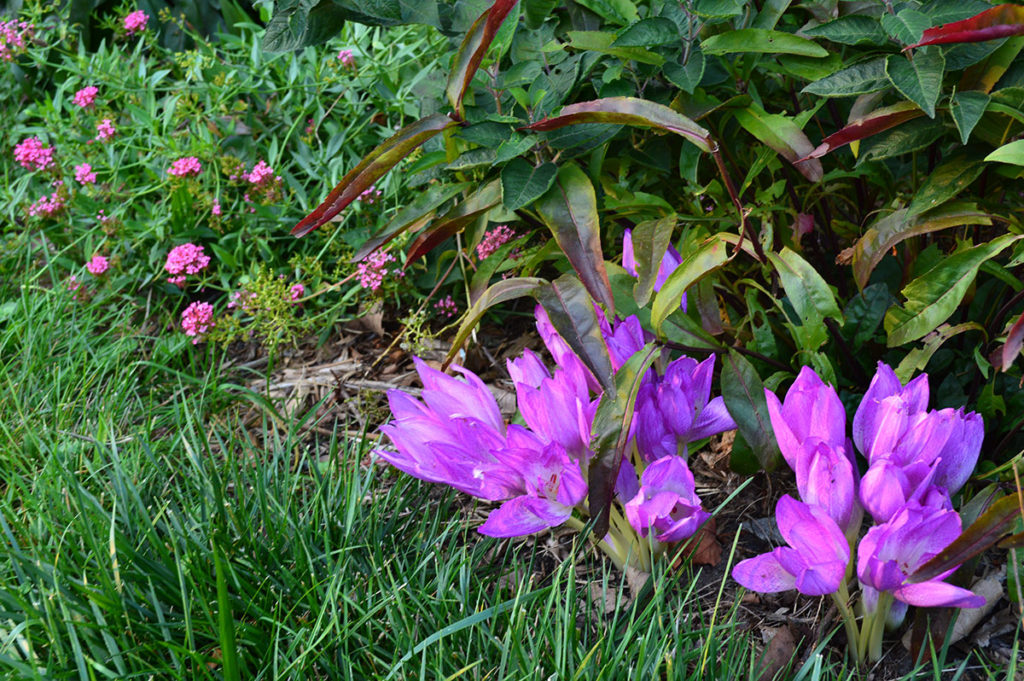
It wouldn’t be the end of summer without the sedum blooming! This is one of two on each side of the stairs. In full bloom they remind me of cotton candy. Also pictured are the fading blooms of the black-eyed susan (Rudbeckia) and the little, blue blooms of the plumbago.
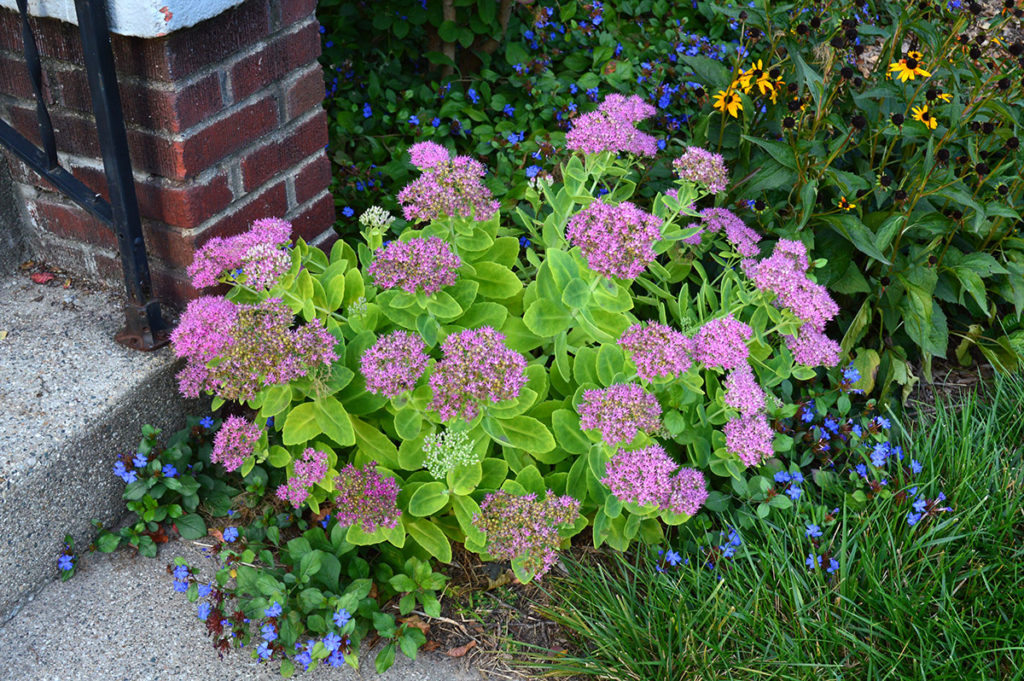
Another set of autum crocus are on the other side of those black-eyed susans. There is just a bit of red left from the tickseed as well.
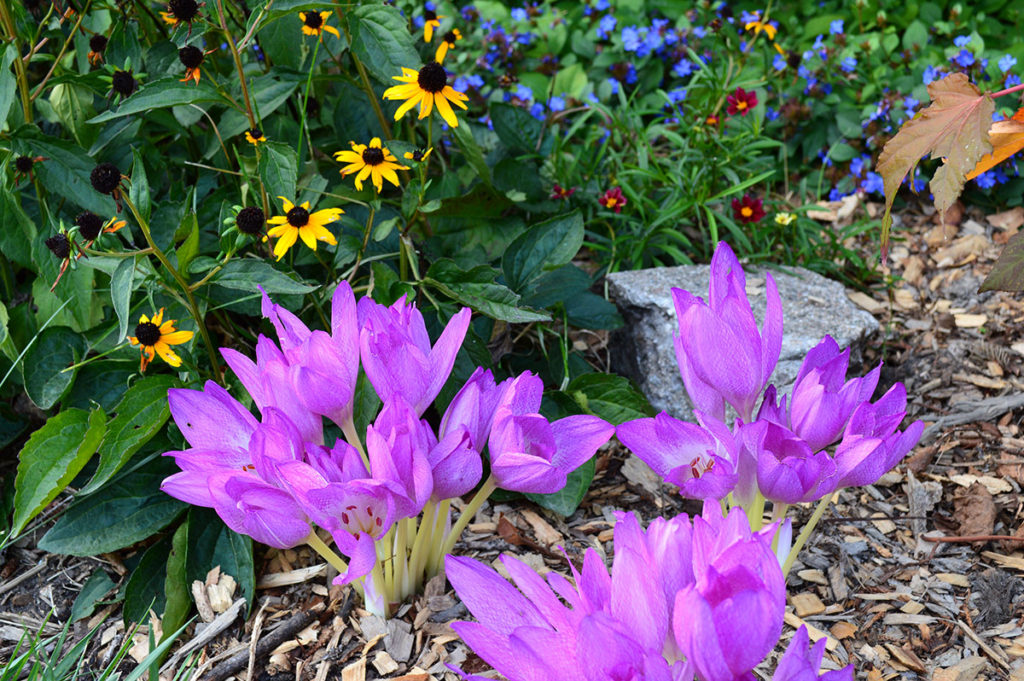
Still in the south bed, the yellow blooms of the shrubby cinquefoil (Potentilla fruticosa) are becoming less and less frequent. The purple coneflowers (Echinacea purpurea) are fading as well.
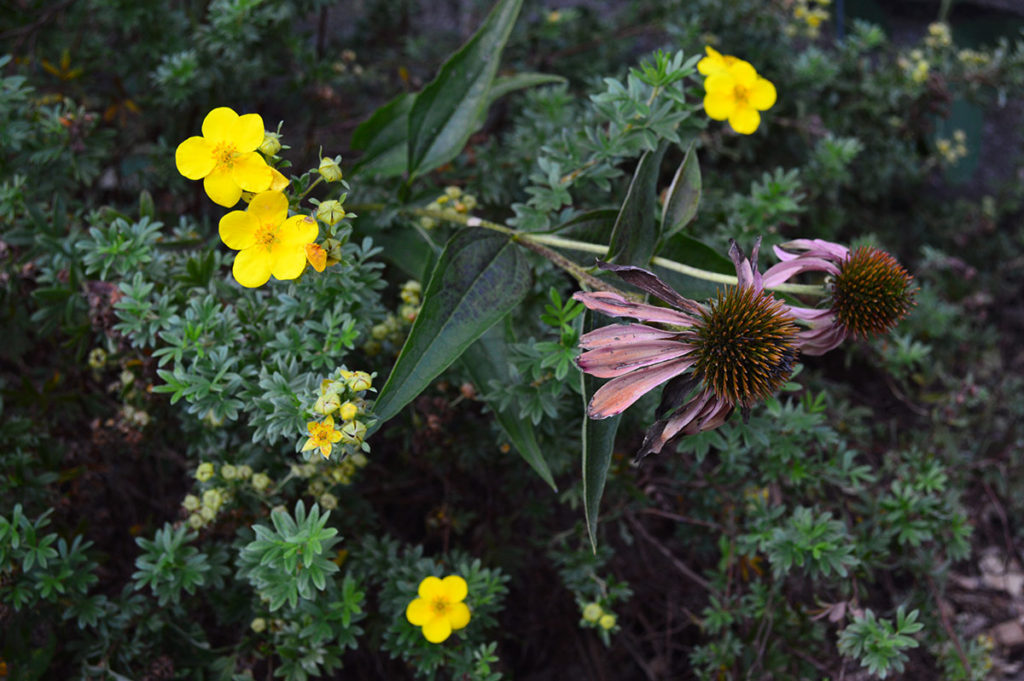
In the backyard garden, located in the north bed but far enough away from the house to receive some sun, the cardinal flowers (Lobelia cardinalis) have done awesome this year. This whole bed was redone when the patio was installed last fall. It was later in the season when I transplanted the cardinal flowers, but they seem to have adapted well. I really like how they look against the dark foliage of the astilbe behind them.
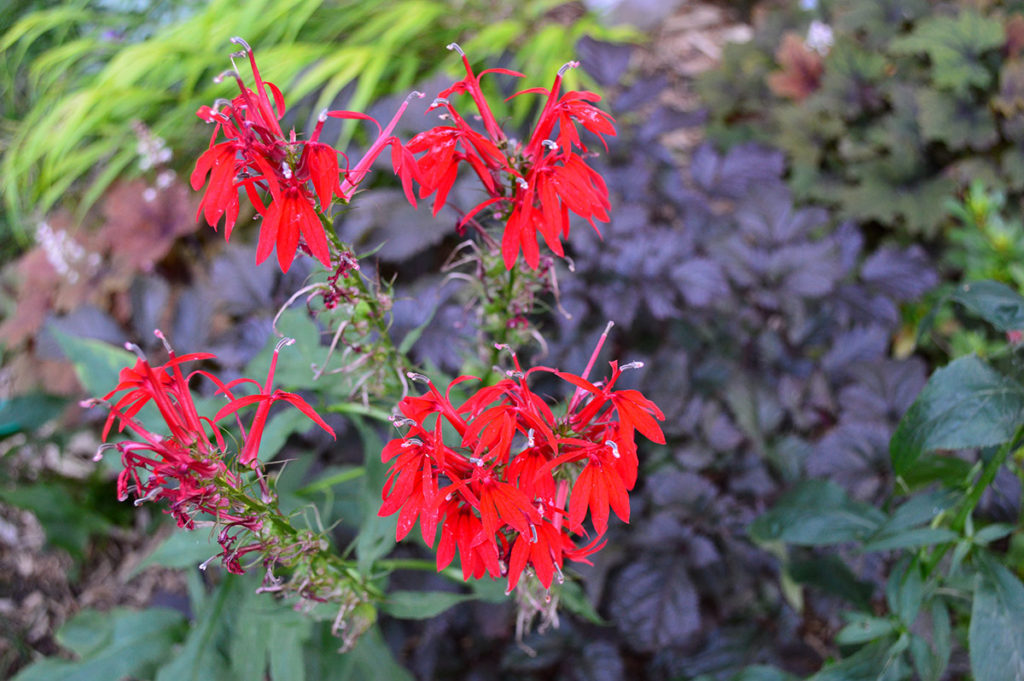
Here are the last blooms of the foamy bells (a cross between Heuchera and Tiarella) in the same north bed. They have been blooming all summer long. As the blooms fade, you can deadhead them, and the plant sends up more of the fairie-like flower stalks.
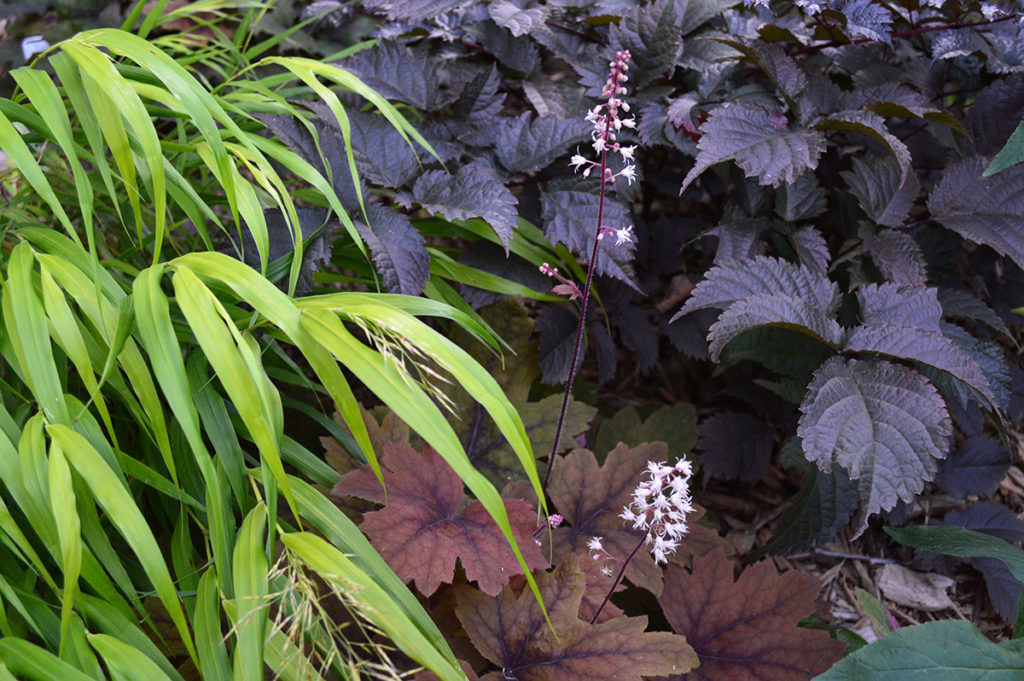
Another autumn bloom we enjoy on the Lot is the Japanese anemone. Here is a volunteer blooming in the backyard bed. This plant is known to reseed a bit, well, a whole bunch. So far it is behaving. There is something about this color and flower shape appearing in fall that I enjoy.
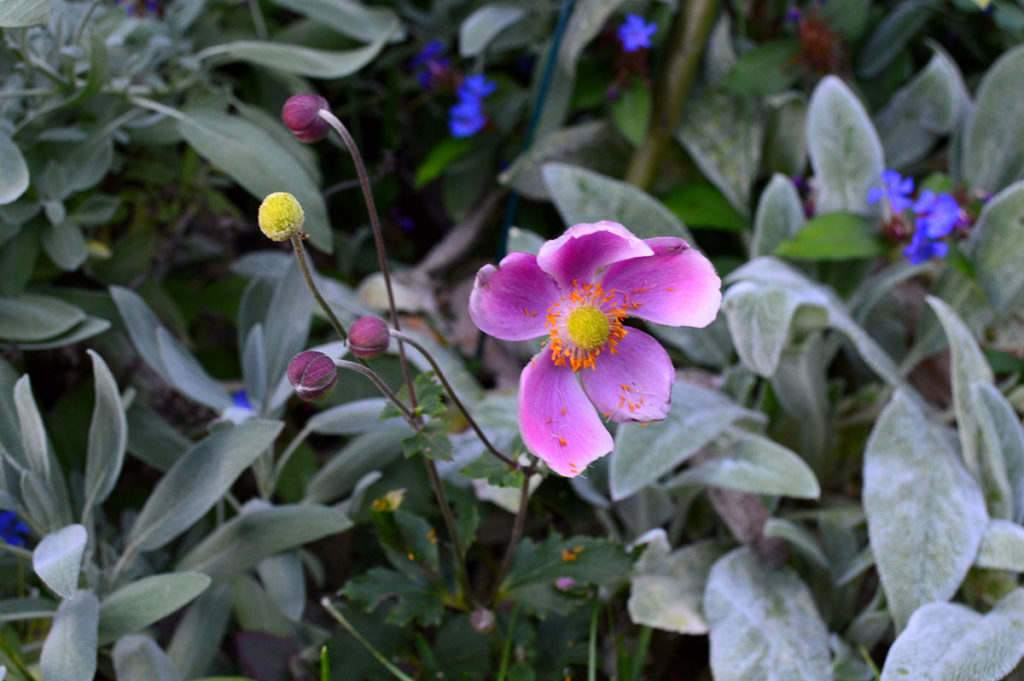
Here is the star of the autumn blooms on the Lot. On the pergola in the backyard garden is the sweet autumn clematis. It is absolutely lovely and smells wonderful. On a sunny day, I like to stand beneath it and listen to the air hum due to all the bees visiting the plant.
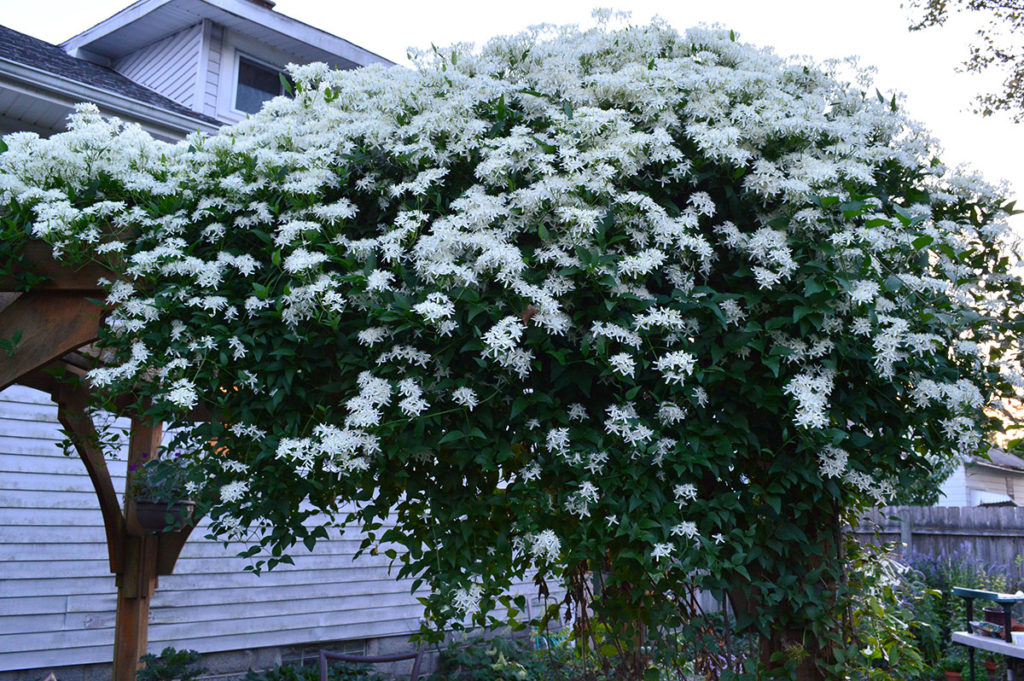
Gardener Beware: This plant grows very fast and will freely reseed. It politely behaved its first several years in the garden, but this season I was pulling A LOT of volunteers. Also, you need to really dig and grab the volunteer plants by the roots to remove them. Otherwise the vine will snap and you’ll be pulling the same plant a week or so again later.
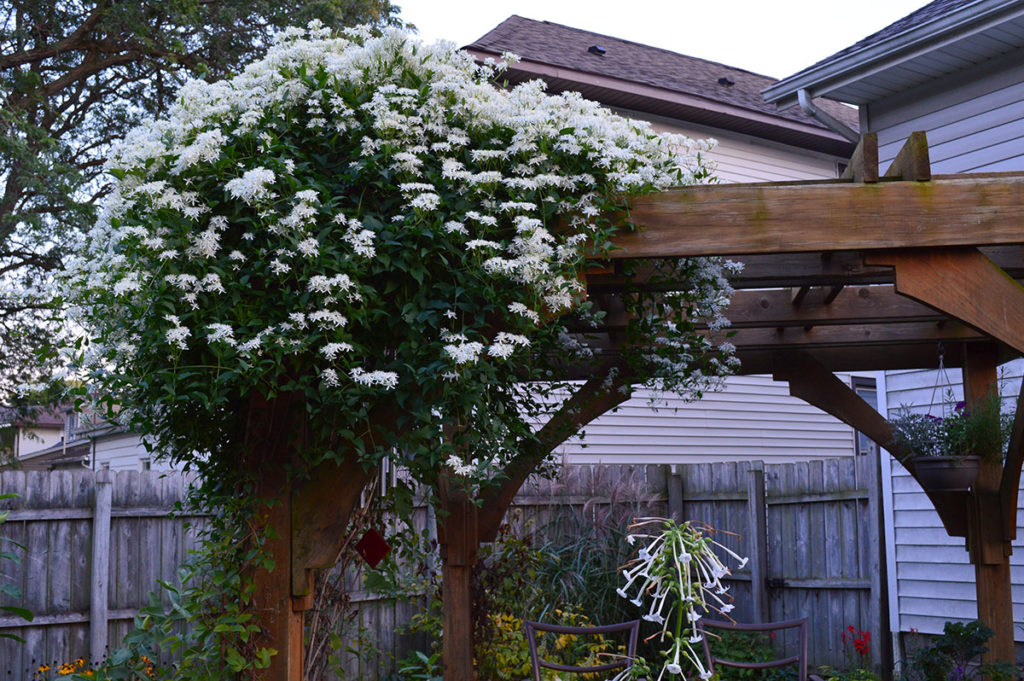
While out taking photos for Bloom Day, the Management pointed out the catnip that is blooming. It is always blooming. Bees love it. The Management loves it. Many gardeners prefer catmint because it is a saint compared to the free-roaming, gangly catnip plant. However, I enjoy letting it wander about the Lot and just pulling the old plants when they get too out-of-hand.
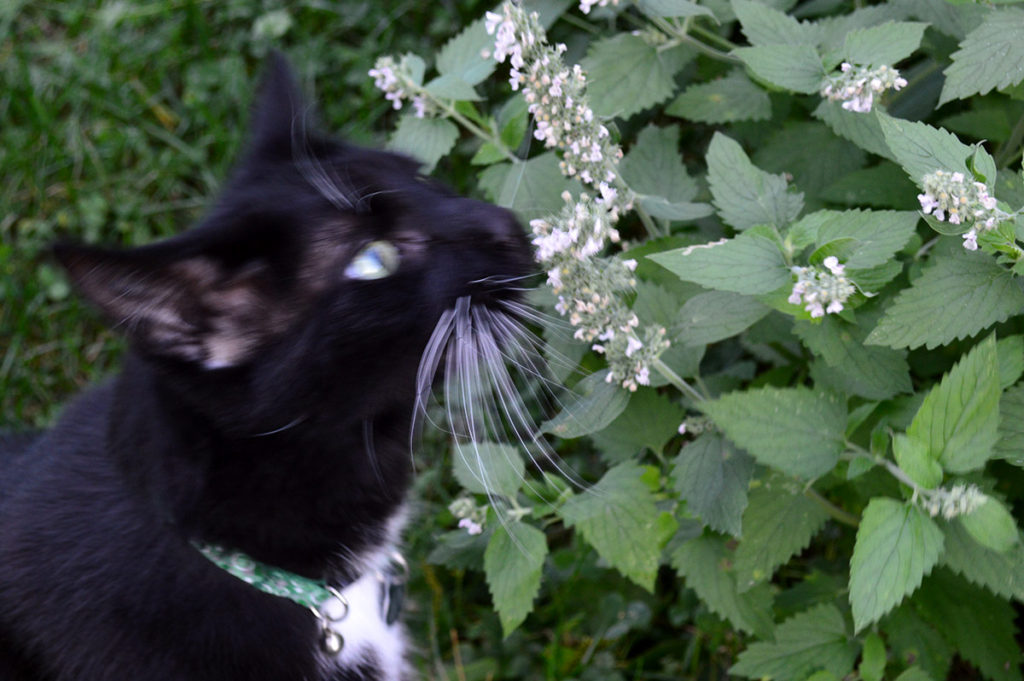
Another bloom for autumn is the aster. They have finally popped! Here they are with the fading tickseed (Coreopsis).
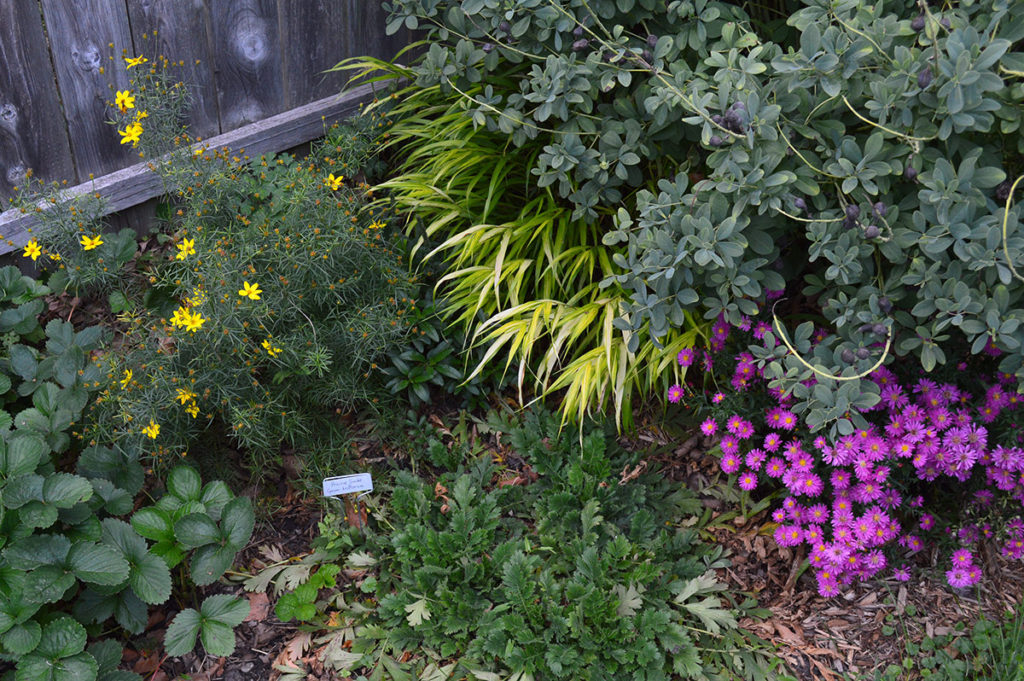
And here’s another shot of the asters deeper into the garden.
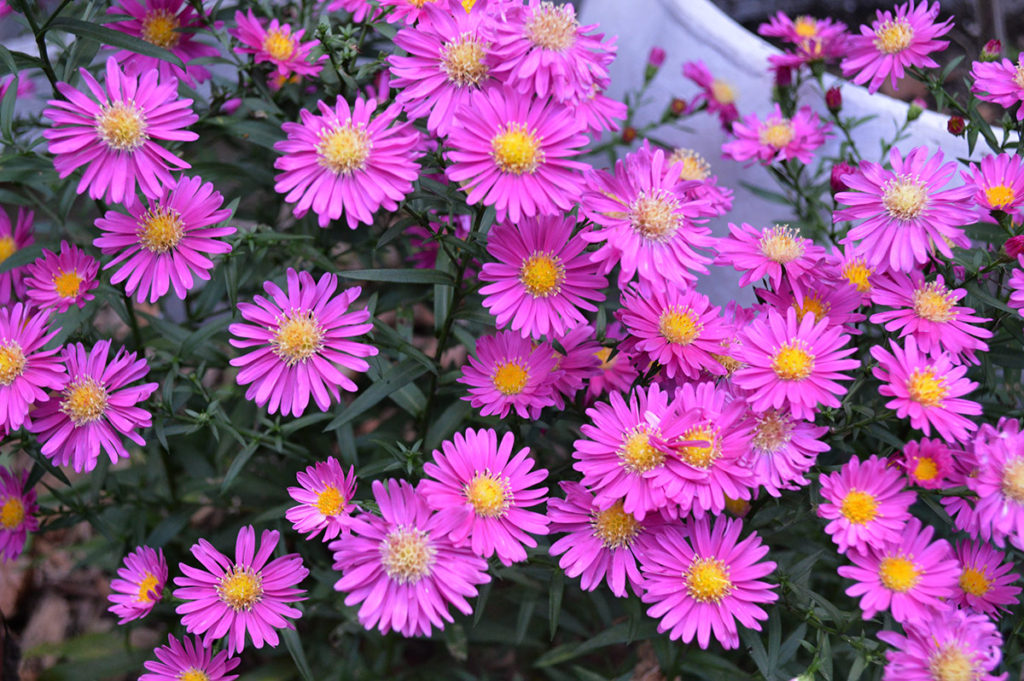
This plant is newer to me. I rescued it as foliage a few seasons ago when I was replanting a garden for someone. I wasn’t sure what it was, so I planted it and waited. It turns out to be closed bottle gentian (Gentiana andrewsii). I need to do some more reading on its preferred growing conditions because even though it blooms, the plant is quite floppy where it currently resides.
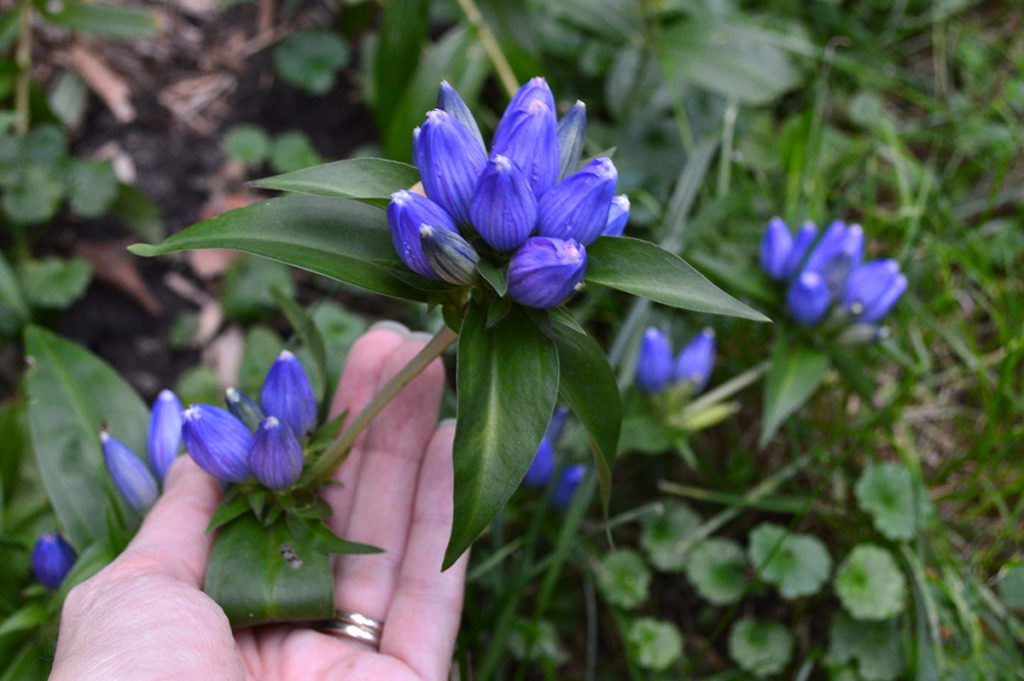
I didn’t realize how many blooms we have going on the Lot at this time of year until I started resizing photos and writing up this post. Something Bloom Day forces me to do is look at all areas around the Lot at different times of the growing season. I see where there may be “holes” in the color… which means the opportunity to go shopping for new plants, right?!
